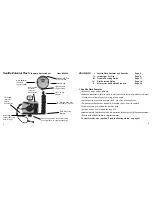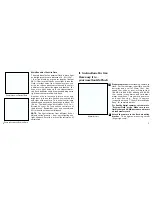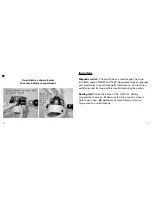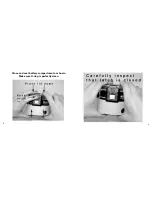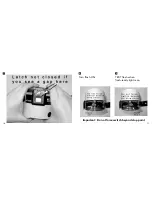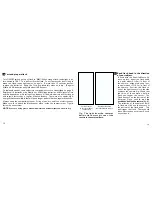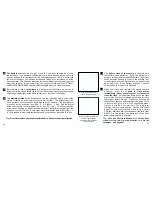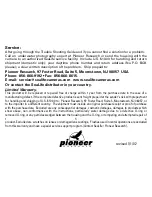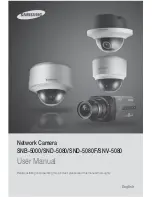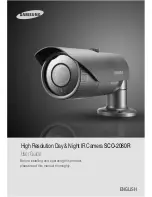
15
Inserting a Moisture Muncher
desiccant packet helps
extend the life of batteries
and electronics.
A removable flash deflector
covers the built-in flash
15
The
built-in
flash of the camera
is covered by a
removable flash deflector. Keep the deflector in
place to prevent unwanted backscatter of light from
small particles floating in front of the camera lens.
In very clear water, the flash cover may be removed
by pulling it out of the bottom bracket. This will
intensify the light and avoid shadows.
16
After use, flash and camera (the closed camera
housing), must be
soaked in fresh water
immediately.
Never use detergents or cleaners to
clean the flash.
Let the water drain out of the flash
arm (which has small drainage holes) and let it dry
thoroughly before storage. Flash arm links can be
separated to remove excess water (see page 14). It
is best to hang it up in a well-ventilated place,
similar to drying your wet suit. For long-term
storage, remove the batteries. Extend the life of
batteries and electronics by inserting a small
1.5-gram Moisture Muncher desiccant capsule (item
# SL911) in the battery compartment of the flash
head (same as used in camera).
Tip: Also use Moisture Muncher (1-oz/28g bag)
when storing your spare batteries in a closed
container. (see page 23)
The flexible arm
consists of eight 1-inch (2.5 cm) links covered by a foam
rubber sleeve. You can bend the flexible arm in any direction, but do not force
it beyond the point of resistance (or the links will separate). If you want to take
the arm off or apart, you can bend it beyond the point of resistance, until the
links separate. The links can easily be re-connected by pushing them together
until they snap in. In the same way, you can connect the optional 3” (8cm)
FLASH EXTENSION ARM (item #SL965) available from your local dive shop.
6
Before diving, take a
test picture
in a darker area (the flash may not fire in
direct sunlight). Check that both the green flash-ready light of the camera and
the orange-ready light of the flash comes on in less than 15 seconds.
7
The
maximum reach
of the flash depends on the reflection, angle, color of the
object, visibility, and the amount of ambient sunlight. The brightness of the
flash has been set for the shooting distance of the camera. The best pictures
are taken with a close-up lens from 2 - 4 ft (60cm - 1.2m). Good pictures
without a close-up lens are taken from 4 - 6 ft (1.2 - 1.8m). The most common
error is over-flashing on bright, close-by objects. The optimal reach of the flash
has been set to 6 ft (1.8m) in very clear water and depths below 40 ft (12m). It
is not intended to illuminate the background, or seascapes, beyond 8 ft (2.4m).
Tip: From time to time, check that the flash head is aimed in the proper direction.
14
12
13
14


